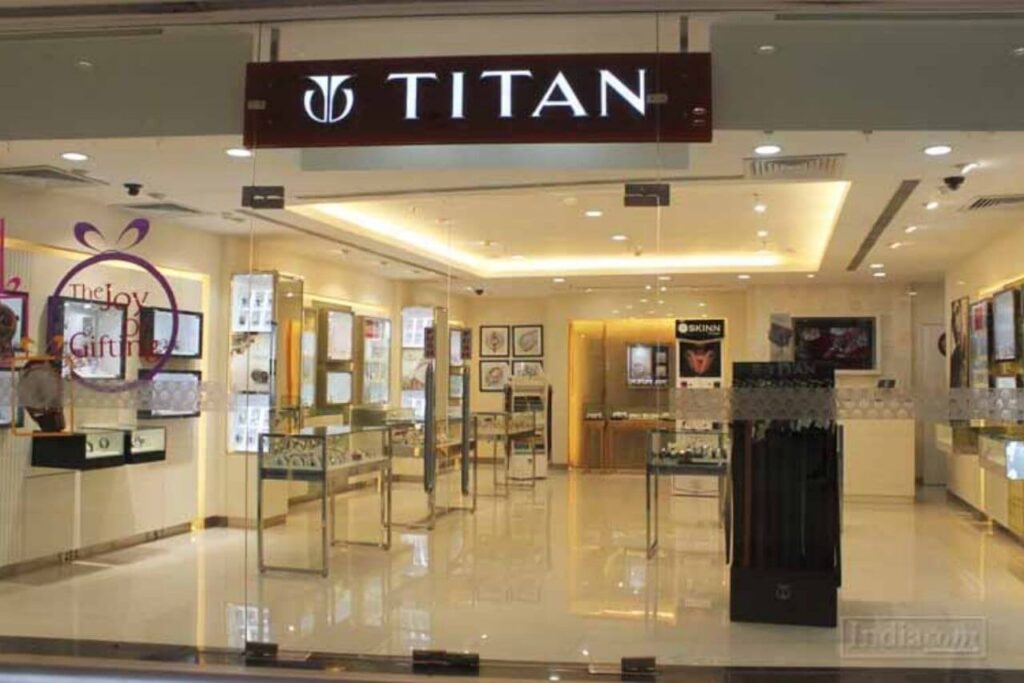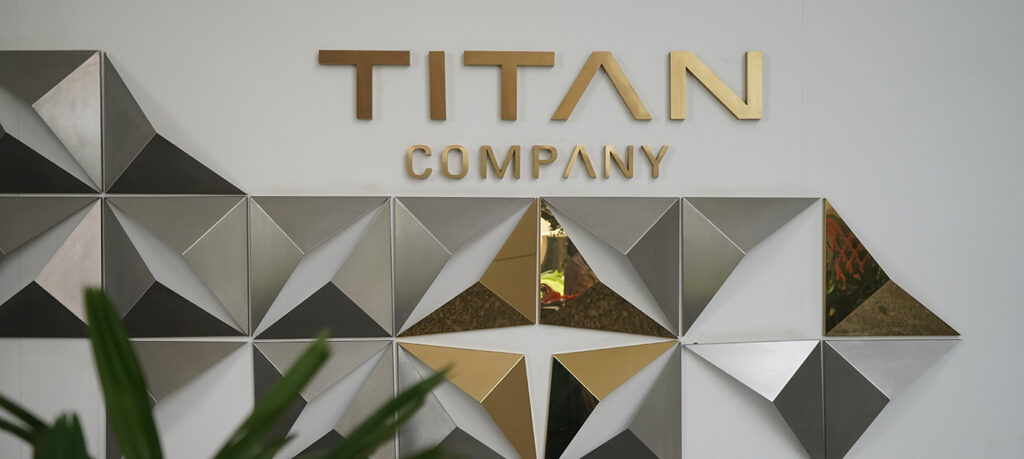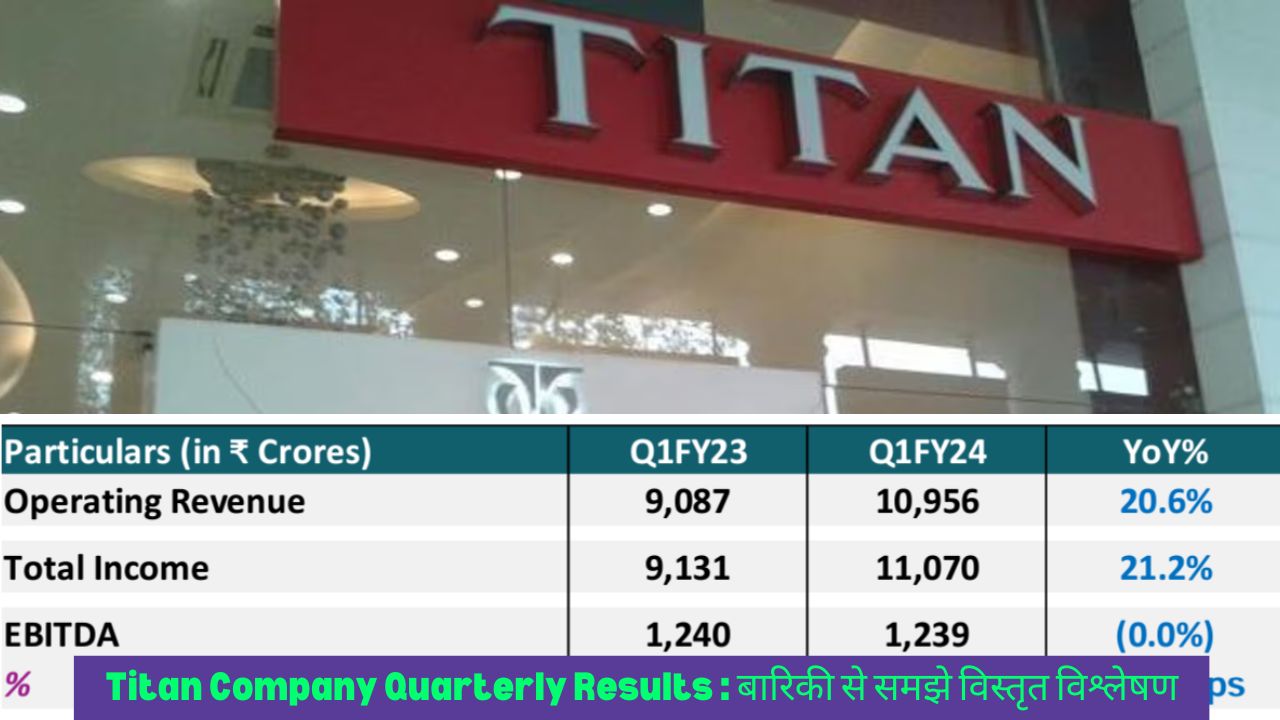The latest Titan Company Quarterly Results reveal a blend of strong revenue growth alongside challenges in profitability for the renowned Tata Group’s flagship enterprise, Titan. With rising revenue and operational costs, Titan’s performance for the September quarter shows a nuanced picture of both opportunities and hurdles. This article dives into the intricate details of Titan’s financial figures, the impact of market dynamics, and the strategies the company is implementing to drive future growth.
Overview of Titan Company Quarterly Results
For the September quarter, Titan reported a consolidated profit of ₹704 crore, a decrease from ₹916 crore in the same period of FY24, reflecting a significant 23% year-on-year drop. On a standalone basis, Titan’s profit also declined, dropping 25% to ₹705 crore from the previous year’s ₹940 crore. This decline can be attributed to rising operating expenses, increased competition, and fluctuations in input costs, which impacted Titan’s profitability despite a substantial surge in revenue.

Key Financial Highlights
- Consolidated Profit: ₹704 crore (down from ₹916 crore, marking a 23% drop)
- Standalone Profit: ₹705 crore (down from ₹940 crore, marking a 25% drop)
- Consolidated Revenue: ₹13,660 crore (up from ₹10,837 crore, showing 26% growth)
- EBITA: 14.7% decline, ending at ₹1,188 crore
- Profit Margin: Declined by 330 basis points, falling to 5.2% from 8.5%
These Titan Company Quarterly Results offer valuable insights into how increased operating costs and competitive pressures can affect even industry leaders in challenging economic conditions.
Revenue Growth in Titan Company Quarterly Results
A noteworthy aspect of the Titan Company Quarterly Results is the impressive 26% rise in consolidated revenue, which reached ₹13,660 crore. This growth was primarily driven by sustained demand across Titan’s diverse product lines, especially in jewelry, watches, and eyewear. The jewelry segment, being the largest revenue contributor, benefited from rising demand for gold and diamond products, while watches and eyewear also experienced solid growth.
- FY24 Q2 Consolidated Revenue: ₹10,837 crore
- FY25 Q2 Consolidated Revenue: ₹13,660 crore
- Revenue Growth: 26%
Segment-Wise Analysis in Titan Company Quarterly Results
Titan’s strong brand presence and product diversification across jewelry, watches, and eyewear have played a crucial role in its financial performance. Here’s a breakdown of how each segment performed in the Titan Company Quarterly Results.
Jewelry Segment
As the leading segment, jewelry accounted for a significant share of Titan’s total revenue. Despite intense competition and fluctuating gold prices, this segment saw positive revenue growth, largely due to its established market reputation and premium product offerings.
- Revenue Contribution: Approximately 75% of total revenue
- Growth Factors: Strong demand for gold and diamond jewelry, high consumer trust in Titan’s brand
- Challenges: Competitive pressures, gold price volatility
Watches and Wearables Segment

Titan’s watches and wearables division demonstrated solid growth, with demand for both affordable and high-end timepieces. This segment capitalized on Titan’s innovation in watch design and its expanding presence in the wearables market.
- Revenue Contribution: Approximately 15% of total revenue
- Growth Factors: Innovation, brand loyalty, demand for digital and stylish wearables
- Challenges: Rising competition from tech-driven wearables and global brands
Eyewear Segment
The eyewear segment, which includes Titan’s Fastrack and Titan Eye+ brands, has grown steadily. Increased awareness of eye health and a focus on stylish eyewear have helped this division make a strong contribution to the Titan Company Quarterly Results.
- Revenue Contribution: Approximately 10% of total revenue
- Growth Factors: Fashionable eyewear trends, increased health awareness
- Challenges: Competition from both domestic and international eyewear brands
Profit Margin Challenges in Titan Company Quarterly Results
The Titan Company Quarterly Results highlighted a significant decline in profit margins, falling from 8.5% in FY24 Q2 to 5.2% in FY25 Q2, a decrease of 330 basis points. This was attributed to a combination of higher costs in raw materials and operational expenses. Despite strong revenue growth, the company’s profit margins were under pressure due to these rising costs.
- Profit Margin FY24 Q2: 8.5%
- Profit Margin FY25 Q2: 5.2%
- Reduction: 330 basis points
Reasons for Titan’s Profit Decline in the Quarterly Results
Several factors contributed to the decline in Titan’s profit in the Titan Company Quarterly Results:
- Higher Operational Costs: Increased costs related to materials, labor, and marketing affected Titan’s ability to maintain profit margins.
- Intense Market Competition: The entry of new competitors in Titan’s core segments, especially jewelry, watches, and wearables, intensified pricing pressures.
- Fluctuating Raw Material Prices: Rising costs of materials, especially gold and diamonds, impacted Titan’s profitability.
Strategic Initiatives by Titan
The Titan Company Quarterly Results emphasize the importance of strategic actions to overcome challenges and improve profitability. Titan has outlined several initiatives to address its declining profit margins and enhance overall performance.
- Cost Optimization: Titan is implementing cost-cutting measures across its supply chain to reduce operational expenses.
- Product Innovation: The company plans to introduce new product lines and collections, targeting both existing and new consumer segments.
- Digital Transformation: Titan is investing in digital marketing and e-commerce to reach a broader, tech-savvy audience.
- Market Expansion: Titan aims to enter new domestic and international markets, which could further increase revenue.
Expert Insights on Titan Company Quarterly Results
Financial analysts and industry experts believe that Titan’s strong revenue growth is a positive indicator of consumer demand for its products. However, the decline in profit margins highlights the need for Titan to balance growth with cost efficiency. The Titan Company Quarterly Results indicate that with the right strategic adjustments, Titan has the potential to overcome current challenges and continue its upward trajectory.
Titan’s Performance: Breaking Down the Growth Drivers and Challenges
Titan’s position in the Indian market is deeply rooted in its rich legacy and broad appeal across different consumer segments. Over the years, the company has become a household name, known not only for its jewelry but also for its high-quality watches, eyewear, and accessories. The Titan Company Quarterly Results showcase this broad appeal and consumer loyalty, as seen in the revenue growth in the September quarter of FY25. While revenue numbers have shown a healthy increase, the drop in profit underscores the importance of managing costs and adapting to a highly competitive market.
Analysis of Revenue Growth in Titan’s Key Segments

In the latest Titan Company Quarterly Results, the 26% growth in consolidated revenue, reaching ₹13,660 crore, illustrates a high demand for Titan’s offerings across its major product lines. Let’s examine the key factors driving growth in each segment:
- Jewelry Segment
Jewelry remains Titan’s primary revenue driver, comprising about 75% of the total revenue. The demand for both gold and diamond jewelry has been resilient, bolstered by traditional consumer preferences and Titan’s reputation for trust and quality. Wedding and festive seasons have also played a role in boosting jewelry sales, with Titan’s unique designs and branding drawing in a wide array of customers. - Watches and Wearables
Titan’s watch segment has diversified in recent years, expanding from traditional watches to digital wearables. With a focus on stylish, functional designs that cater to younger demographics, this segment continues to gain traction. Titan’s sub-brands, like Fastrack and Sonata, have resonated with different income groups, further strengthening its hold in the market. The company’s investment in smartwatch technology, though still in its early stages, has shown promising potential for revenue growth. - Eyewear Segment
Titan’s eyewear division, including the Titan Eye+ and Fastrack brands, has seen steady growth, driven by both fashion trends and an increased awareness of eye health. Affordable pricing and access to quality optical products have made Titan a popular choice in this category, capturing market share from both domestic and international competitors.
Decline in Profit Margins: A Closer Look at Contributing Factors
The Titan Company Quarterly Results reveal a decline in profit margin from 8.5% in FY24 Q2 to 5.2% in FY25 Q2. This margin contraction reflects the company’s struggle with rising input costs and competitive pressures. Here are some key factors impacting Titan’s margins:
- Raw Material Costs
As a significant component of Titan’s jewelry business, gold prices have a direct impact on costs. The fluctuations in gold prices, largely influenced by international markets, have raised input costs, leading to a lower profit margin. - Operational Expenses
Titan’s expansive retail network across India involves considerable costs related to rent, labor, logistics, and store maintenance. While these costs support the brand’s strong presence, they also impact profitability, especially as competition in the retail sector intensifies. - Market Competition
Increasing competition from both local players and global brands is putting pressure on Titan’s pricing strategy. In the jewelry segment, local brands often attract customers with competitive prices, while international watch and eyewear brands appeal to the premium market. Titan’s need to balance quality with affordability has become more challenging, impacting its profit margins.
Conclusion
This was all about Titan Company Quarterly Results. We hope you found this article good. At NEWS ABOUT FINANCE, we will add more news about this. If you have any doubts, please get in touch with us ASAP. We are here to help you. Stay connected to our website newsaboutfinance.com more updates regarding this. Thanks.
Frequently Asked Questions (FAQs)
Q1: What were the key highlights of Titan’s quarterly results?
A1: Titan reported a 23% decline in consolidated profit, though its revenue grew by 26% year-on-year in the September quarter.
Q2: Why did Titan’s profit decline despite revenue growth?
A2: Titan’s profit declined due to higher operational costs, increased competition, and fluctuating raw material prices, which reduced profit margins.
Q3: How much did Titan’s revenue increase in the recent quarterly results?
A3: Titan’s consolidated revenue rose by 26%, reaching ₹13,660 crore compared to ₹10,837 crore in the same period last year.
Q4: Which segments contributed most to Titan’s revenue?
A4: The jewelry segment was the largest contributor, followed by watches and wearables, and the eyewear segment.
Q5: What are Titan’s plans to improve profitability?
A5: Titan plans to optimize costs, launch new products, enhance digital sales channels, and expand into new markets to improve profitability.
Q6: How has competition affected Titan’s performance?
A6: Rising competition in key segments like jewelry and wearables has put pressure on pricing, impacting Titan’s profitability.
Q7: What were the main reasons for the decline in Titan’s profit margin?
A7: The profit margin declined due to higher costs in raw materials and operations, along with intense competition.
Q8: Has Titan implemented any cost-saving measures?
A8: Yes, Titan has initiated cost optimization measures to control operational expenses and protect profit margins.
Q9: How does Titan plan to compete with new market entrants?
A9: Titan is focusing on product innovation, digital transformation, and expanding into untapped markets to strengthen its competitive edge.
Q10: What is the long-term outlook for Titan based on the quarterly results?
A10: With strategic measures, Titan aims to balance growth with cost efficiency, positioning itself for sustainable success despite current challenges.
Summary
The Titan Company Quarterly Results present a complex picture of robust revenue growth amidst declining profitability. While the results showcase Titan’s resilience and market demand, they also underline the challenges posed by rising costs and competitive pressures. By implementing cost optimization, expanding market reach, and introducing new products, Titan is well-positioned to improve its financial performance in future quarters.
As Titan moves forward, its strategic focus on operational efficiency, product innovation, and digital engagement will play a critical role in overcoming profitability challenges and maintaining its market leadership across jewelry, watches, and eyewear.

